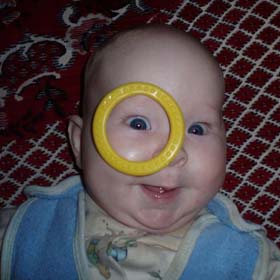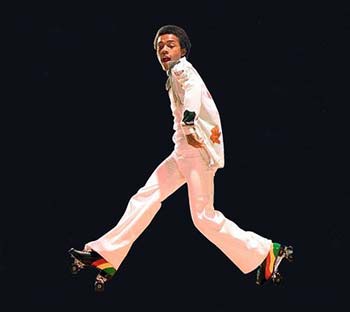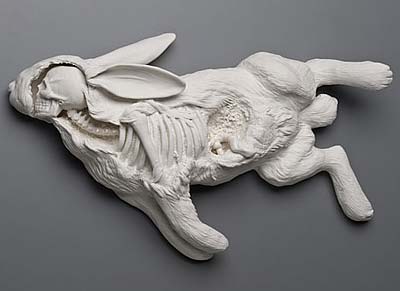And the Tooth Fairy said, ‘Like a Dracula without his fangs’

In the fall of 1996, a $30-million Hollywood production almost ground to a halt because of facial hair. As producer Art Linson recounted in his 2002 memoir, “What Just Happened?,” Alec Baldwin surprised everyone when he showed up to film “The Edge” (1997), a man-against-nature thriller, with an overgrown beard. A profanity-laced debate ensued between producer, star, agent and studio executives.
Finally it came down to this: The execs, who had already sunk millions into the production, wouldn’t shoot the picture with their expensive star acting behind a hairy hedge. The stand-off might have ended badly for the studio if the star had walked, but in the end he didn’t: Mr. Baldwin blinked, emerging from his trailer clean-shaven for the first day of filming.
Why risk so much money over a few whiskers? The answer to that question and other mysteries of modern-day film financing can be found in “The Hollywood Economist,” Edward Jay Epstein’s latest foray into the seamy underbelly of Hollywood spreadsheets.

Will booze make you skinny? (…)
Best case scenario is the study has indeed accounted for all variables and the association is causal and if you’re a woman, drinking 2 glasses of wine daily will help you not gain roughly a third of a pound extra per year.
Worse case scenario? The study proves just how difficult it is to study nutritional variables and that it’s one of those association doesn’t prove causality pieces.
{ Weighty Matters | Continue reading | unsourced photo }

{ A 32-year-old Kentucky woman who said she didn’t know that she was pregnant delivered her newborn son on the floor of her laundry room by herself and even cut the umbilical cord. | AP/The Advocate-Messenger | Continue reading }

Research by Masocco et al. (2009), has confirmed what we already knew: marriage is a protective factor for suicide. I would argue, for suicide in men. Marriage tends to be detrimental to women’s emotional health and well-being.
photo { Nikola Tamindzic }

It doesn’t matter if you go running every morning, or you’re a regular at the gym. If you spend most of the rest of the day sitting — in your car, your office chair, on your sofa at home — you are putting yourself at increased risk of obesity, diabetes, heart disease, a variety of cancers and an early death. In other words, irrespective of whether you exercise vigorously, sitting for long periods is bad for you. That, at least, is the conclusion of several recent studies.

Australia’s vile and poisonous plague of cane toads may finally have met its match — and it comes in a tin of cat food.
After years spent trying to batter, gas, run over and even freeze the toxic toads out of existence, scientists say just a dollop of Whiskas could stop the warty horde.
The cat food attracts Australia’s carnivorous meat ants, which swarm over and munch on baby toads killing 70 percent of them.
{ AFP/Physorg | Continue reading }
The most poisonous animal substance is batrachotoxin, produced by the poison arrow frog of South America. As little as the weight of two grains of table salt will turn your lights out for good.
{ What’s the fastest-acting, most lethal poison? | The Straight Dope | Continue reading }

Sometimes you hear a word for the first time and think: “Of course.” How better to describe Paris Hilton than as a “celebutante” or the frequent tabloid target Alec Baldwin as “the bloviator”? (Thanks, New York Post!)
Now make room for “prehab.”
Prehab made its debut on Feb. 23, the handiwork of GlasgowRose, a commenter on Gawker, after a publicist for Charlie Sheen announced that the star of “Two and a Half Men” was entering rehab as a “preventative measure.”
{ NY Times | Continue reading }
A respected scientist set out to determine which drugs are actually the most dangerous — and discovered that the answers are, well, awkward. (…)
The list, printed as a chart with the unassuming title “Mean Harm Scores for 20 Substances,” ranked a set of common drugs, both legal and illegal, in order of their harmfulness - how addictive they were, how physically damaging, and how much they threatened society. Many drug specialists now consider it one of the most objective sources available on the actual harmfulness of different substances.
That ranking showed, with numbers, what Nutt was fired for saying out loud: Overall, alcohol is far worse than many illegal drugs. So is tobacco. Smoking pot is less harmful than drinking, and LSD is less damaging yet.
{ The Boston Globe | Continue reading }
Andy was one of my best friends. We hung out together several nights a week for over ten years. We used to go to Studio 54 — an amazing place.
{ Jerry Hall interview | Index magazine | Continue reading }
photo { Andy Warhol and Jerry Hall, Studio 54, NYC, late 70s }

Women are up to nine times more likely to suffer from cold hands and feet than men, I read last week. We feel changes in temperature and the seasonal chill more. Did this surprise me? Not a bit . (…)
There are many theories as to why women suffer from this problem. Women have more evenly distributed fat layers, providing internal insulation. But while the result is that our blood supply favours protecting our core organs and trunk over our extremities, it means less blood flows to the hands and feet.
Men on the other hand have more heat-generating muscle mass, better supplied by blood vessels, increasing blood flow and, therefore, warmth.
Foot expert Margaret Dabbs says another reason why women’s feet in particular get colder than men’s is because our skin is thinner. (…)
Avoid alcohol or caffeine as both increase blood flow to the skin, so while you might feel warmer, your body is losing heat. (…)
Mood can influence our temperature - people who are lonely or socially excluded feel the cold more.

A machine that prints organs is coming to market.
The great hope of transplant surgeons is that they will, one day, be able to order replacement body parts on demand. At the moment, a patient may wait months, sometimes years, for an organ from a suitable donor. During that time his condition may worsen. He may even die. The ability to make organs as they are needed would not only relieve suffering but also save lives. And that possibility may be closer with the arrival of the first commercial 3D bio-printer for manufacturing human tissue and organs.
The new machine, which costs around $200,000, has been developed by Organovo, a company in San Diego that specialises in regenerative medicine, and Invetech, an engineering and automation firm in Melbourne, Australia.
photo { Robert Whitman, 80s my livingroom }

Evolution, the theory goes, guarantees survival to the fittest. But we can blame evolution for some of today’s most pressing health problems, such as cancer, obesity, diabetes and cardiovascular disease.
A 2009 Gallup poll found that 44% of Americans believe that God created human beings in their present form within the past 10,000 years. Many of them also think the human body is perfectly designed.
But most scientists—including biologists, anthropologists, paleontologists and geneticists—see the 21st century human body as a collection of compromises, jury-rigged by evolution as our ancestors adapted to changing conditions.
“In many ways, we are maladapted for modernity,” says Stephen Stearns, a Yale evolutionary biologist.
porcelain sculpture { Kate Macdowell | more }

Doctors warned of a potentially dangerous method of cocaine abuse–injecting the drug directly into the urinary tract–a practice that led to complications costing one man his penis, nine of his fingers and parts of his legs. (…)
Perry said the man was admitted to a New York hospital for a problem with his penis, which had remained erect for three days resulting in a painful inability to urinate. (…)
On his third day in the hospital, the man’s erection suddenly went down, but blood leaked into the tissues and coagulated under the skin of his feet, hands, genitals, back and chest over the next 12 hours.
{ UPI/Cocaine.org | Continue reading | Thanks Reto! }
I used to think feminists had a lot of things to worry about, such as the fact that even the most educated and capable of women still make 78 cents on a man’s dollar, that women are still subject to many more crimes of physical and domestic violence than men, and that hard-won reproductive rights are in danger of being systematically withdrawn without our consent. (…)
Who knew? Facial hair is, apparently, a feminist issue.

{ Sleep, say US feminists, is the next big issue for women to address — doing less and enjoying more duvet time is the way to go. | Times | Full story }
photo { Abbey Drucker }
The promise—and the hype—of changing your DNA through behavior.
Studies showing how experience alters genes have been few and far between—which is why a new one on smoking and diet caught my eye.
The study of these kinds of changes in genes is called epigenetics. Crucially, the changes do not involve alterations of gene sequences, those famous A’s, T’s, C’s, and G’s that the Human Genome Project figured out. (…)
Scientists are now making specific, actionable discoveries in epigenetics. This week, for instance, researchers are reporting that eating leafy green vegetables, folate (found in these veggies as well as in some fruits and in dried beans and peas), and multivitamins can affect the epigenetics of genes involved in lung cancer in a way that could reduce the risk of getting the disease, especially from smoking.

You might have seen news reports about a recent study showing that religious people are no healthier than non-religious. (…)
Working out the relationship between religion and health is actually quite complicated. If you take the straightforward approach the answer is clear: religious people are unhealthier and die younger than the non-religious.
The reason for that is obvious. Religious people tend to be poorer and less well educated. As a result, most studies try to work out whether religious people are healthier after adjusting for these differences.
So the key question boils down to this: which differences should you adjust for? Your decision on this will affect the answer you get. (…)
Most studies adjust for basic demographic factors. Older people and women are more likely to be religious, and both these affect your chances of heart attacks. Most studies also adjust for education and income level. (…)
But there are also a host of lifestyle factors that make heart disease more likely (smoking, lack of exercise, overeating). Here’s where it starts to get more difficult, because religion could definitely cause you to be a nonsmoker.
Many studies adjust for these lifestyle factors. But you can go a step further - and that’s what they did in this study. (…)They found that religious people smoked less. This was one of only two lifestyle factors that remained after they adjusted for all the demographic differences between the religious and non-religious (age, gender, race, education and income). That’s something that’s commonly observed, and it may be because religion provides social pressure and support to help people quit.
But the study also found that religious people were fatter (again, after adjusting for demographic factors). The effect was large - religious people were 50-60% more likely to be obese.
photo { Katerina Jebb }

You’re in a crowded shopping mall when suddenly, without any warning, you feel light-headed. Just cross your legs, squeeze your muscles, and ah! You’ve prevented a fainting spell.
Half of us will faint at some time. And for as many as 500,000 Americans, mostly women ages 25 to 40, fainting is a regular experience brought on by simply standing up quickly.
If you’re someone who’s prone to fainting, and your doctor has ruled out an underlying medical condition as the cause, try this European swoon stopper. A recent study shows that the simple act of crossing your legs and tensing your muscles can stop fainting instantly.
photo { Matthew Taplinger }
Doctors eventually determined that Mrs. Lee had suffered from broken-heart syndrome. (…) The mysterious malady mimics heart attacks, but appears to have little connection with coronary artery disease. (…)
For reasons that aren’t fully understood, the problem, formally known as stress-induced cardiomyopathy, afflicts mostly women after menopause. The syndrome is relatively uncommon, accounting for an estimated 1% to 2% of people—and about 6% of women—who are diagnosed with a heart attack. In addition to such common emotions as grief and anger, doctors say broken-heart syndrome has been triggered by a person’s anxiety over making a speech, a migraine headache or the emotional response to a surprise party. It can be fatal on occasion, but for the most part patients recover quickly, with no lasting damage to their hearts.
In a conventional heart attack, an obstructed artery starves the heart muscle of oxygenated blood, quickly resulting in the death of tissue and potentially permanently compromising heart function. In contrast, the heart muscle in broken-heart-syndrome patients is stunned in the adrenaline surge and appears to go into hibernation. Little tissue is lost.